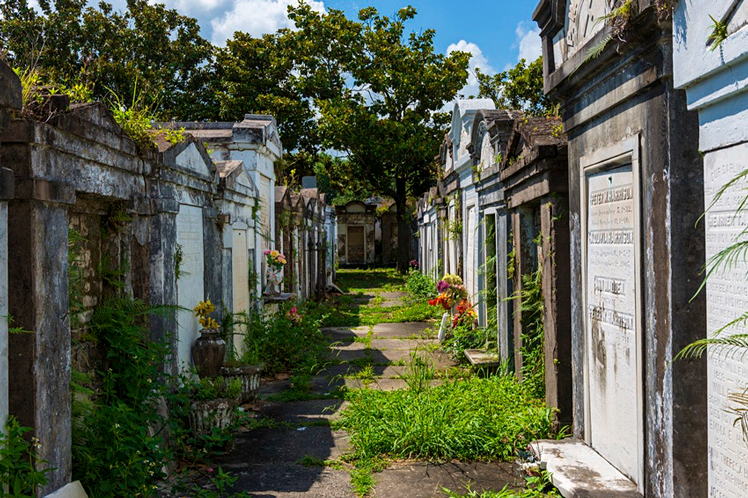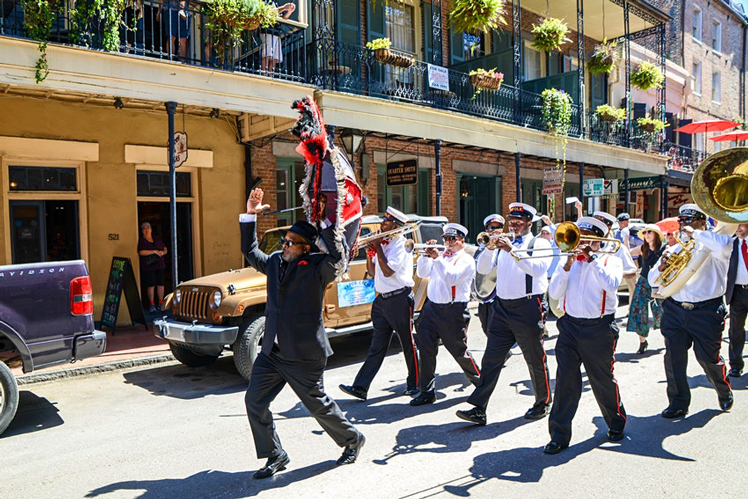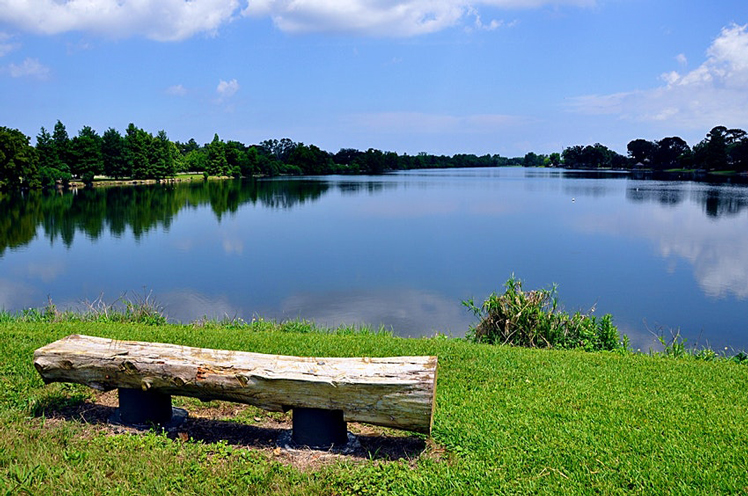
20 free things to do in New Orleans
TripFalcon March 07, 2021
Last Update: 2022-11-19 21:23:43New Orleans is a good value-for-money city, and not just because the drinks are cheap. The city that gave the USA carnival season is itself a sort of perpetual carnival, a place where spectacle and showmanship are constantly on offer to even the casual visitor – and it's all free.
Here are 20 free things to do in New Orleans.
. Mardi Gras
Few cities are as defined by an event the way Mardi Gras defines New Orleans. The holiday, which hits in February or March depending on the year, has been called the greatest free show on Earth, and it's an explosion of color, costumes and revelry. Despite the cliches, the annual celebration is actually largely aimed at families. The two-and-a-half weeks preceding Mardi Gras are known as Carnival and are similarly packed with parades and street performances.
2. City Park
While New Orleans’ City Park is not actually managed by the city, it is still free and open to the public. Visitors can expect to find ancient live oak trees with Spanish moss beards, slow waterways, Greek-style pavilions, and walking trails that meander through woods and wetlands.
3. Royal Street
A stroll down Royal Street is a stroll through the heart of the French Quarter, minus the booze-soaked bacchanalia of adjacent Bourbon Street. Various blocks expose visitors to some of the city’s finest Caribbean-style architecture. Travel tip: the sectioned off area that's chockablock of street performers becomes pedestrian-only in the middle of the day.

New Orleans is filled with historic and architecturally stunning structures © Tiago Fernandez / Getty Images
4. Lafayette Cemetery No. 1
New Orleans is famed for its necropolis-style cemeteries, filled with raised mausoleums that keep local corpses from washing away during the city’s fabled rainstorms. Lafayette, located in the Garden District and packed with creeping vines, gnarled tree roots and faded statuary, is one of the most pathos-drenched examples of the local Gothic cemetery genre.
5. Louis Armstrong Park
Usually just called “Armstrong Park” by locals, this park, adjacent to the Treme and French Quarter, was once the site of Congo Square, the place where African slaves were allowed to perform their Old World music. The performances laid the foundation for the development of all the sonic genres New Orleans has helped give the world. Today, the park is home to sculptures and walkways and often hosts free festivals and concerts throughout the year.
6. Sydney & Wanda Besthoff Sculpture Garden
Some 90 sculptures by world-renowned artists pepper a series of shady walking trails that web over two lagoons and through a living forest of magnolia and live oak trees. The Besthoff Sculpture Garden is a beloved gem and fixture of the local arts scene and represents one of the city’s best marriages of public art and outdoors activity. Admission is free.
7. Palace Market
On Frenchmen Street – itself a notable gratis attraction – you’ll find this art market, a sort of bizarre bazaar of some of this city’s funkiest creatives. “Art market” is a broad brush, and in this case includes weird t-shirts, idiosyncratic crafts, handmade jewelry and the occasional jacket detailing/bedazzling. Located next to the similar, just-a-skooch-smaller, Art Garden market.

Second lines are a major part of New Orleans' legacy © Suzanne C. Grim / Shutterstock
8. Second Lines
A second line is a New Orleans street parade, led by a local brass band and followed by hundreds of citizens carrying on because life is short so why not listen to some good music? While weddings and even conventions throw small second lines, the real deal parades that occur in Treme and Central City – both largely African American neighborhoods – have deep community significance. Second lines generally occur on Sundays outside of summer; schedules can be found on the website of local radio station WWOZ.
9. Jackson Square
The beating heart of the French Quarter, Jackson Square fronts the gorgeous St Louis Cathedral, perhaps the most iconic building in New Orleans, plus the historic Pontalba apartment buildings, the Cabildo, a state history museum, and the Presbytere – a museum dedicated to Mardi Gras and Hurricane Katrina. This pedestrian-only area is constantly (like, 24 hours) filled with street performers, tarot card readers, artists and general non-stop pageantry.
10. St Augustine Church
St Augustine is the oldest African American Catholic church in the country and occupies a lovely tree-lined corner of the Treme neighborhood and a vitally important position in African American history. The congregation explicitly preaches for civil rights and social justice and is the site of the moving sculpture, the “Tomb of the Unknown Slave.”
11. Crescent Park
Many visitors to New Orleans are surprised at how tough it can be to spot the Mississippi River, given that said river is so integral to the city’s identity. But this isn’t the case at Crescent Park, which runs alongside the banks of the famed river adjacent to the candy-colored charm of neighborhoods like Faubourg Marigny and Bywater.
12. Bourbon Street
The most (in)famous street in New Orleans is a multi-block procession of neon, bars, strip clubs, bachelor/ette parties, drinks the color of a Lisa Frank binder and bad decisions. At least, that’s Bourbon closer to Canal St.
13. Free Performances
The New Orleans Jazz & Heritage Foundation puts on several free festivals and concerts throughout the year. The music department at the University of New Orleans also has an impressive lineup of shows that are free and open to the public. There are also plenty of musical acts on the street and in local bars, but these aren’t really free: locals pride themselves on being good tippers, and if a tip hat or jar gets passed around, you should always kick in some money.
14. Magazine Street
If you like shopping, historic buildings, or both, take a walk down Magazine Street. The roughly six miles of city blocks offer up the best shops, galleries, restaurants and bars in New Orleans. It’s popular with all ages; some blocks seem to cater more towards students, while others are aimed at families.
15. St Charles Avenue
Few people can cross the length of St Charles Avenue without having to pick their jaw up off of the floor. This is classic overgrown, lush and fecund New Orleans: a wide avenue, cut through by a charming streetcar (technically not free, but at $3 for an all-day pass, it’s pretty close), flanked on either side by enormous live oak trees and some of the South’s most stately mansions.

Bayou St John offers a cool reprieve on a hot New Orleans day © Chuck Wagner / Shutterstock
16. Bayou St John
Once an actual bayou (a body of very slow-moving water), Bayou St John used to form a natural watery highway throughout the marshy membrane of historic New Orleans. Now, this waterway is a pretty body of water plunked directly in the middle of the city. It’s surrounded by small grassy walkways and forms a pleasant natural cooling agent on hot days (of which there are many…).
17. Frenchmen Street
While Frenchmen can feel as busy as Bourbon on the weekends, it’s still well worth a visit; this is the best concentration of live music clubs in the city. Stroll around after 6pm on any given evening (even during the week), and you’ll hear music somewhere that will inevitably pull you in.
18. Arts Market of New Orleans
Every fourth Sunday of the month, the Arts Council of New Orleans puts on this excellent juried arts market at Palmer Park, located just off of Carrollton Ave. There you’ll find a showcasing of some of the city’s local creative talent, as well as kid-friendly music and activities.
19. Esplanade Avenue
Most visitors to New Orleans have heard of Bourbon St and St Charles Avenue is at least world-famous in photos, but it’s the rare tourist who mentions Esplanade Ave. That’s telling because this is an absolutely stunning street, lined with French-Creole style mansions and cut through by a bicycle lane that extends all the way from the French Quarter to the fields of City Park.
20. Audubon Park
Although Audubon is smaller than City Park, it's also filled with live oak trees and Spanish moss and is flanked by some of the city’s most impressive mansions and handsome neighborhoods.

